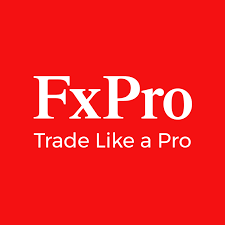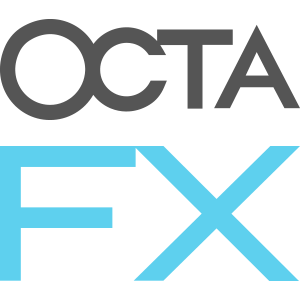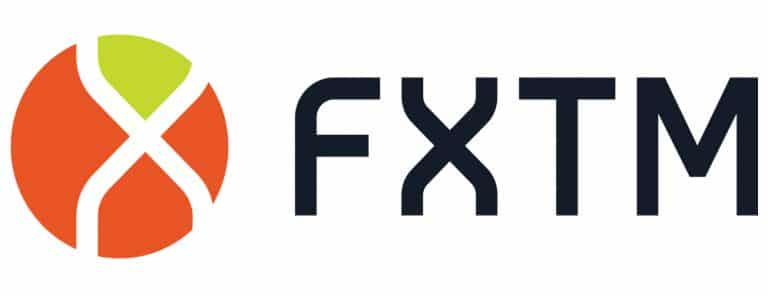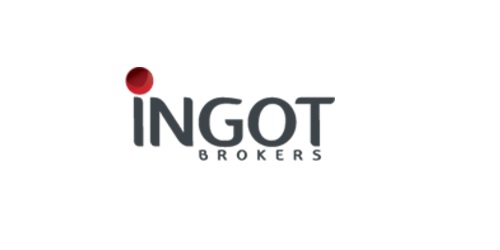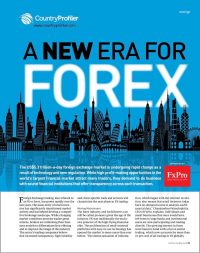Report: A New Era for Forex
Media: Lufthansa Inflight Magazine
Sector: Foreign Exchange Trading
Publication Date: June 2015
A New Era for Forex
The US$5.3 trillion-a-day foreign exchange market is undergoing rapid change as a result of technology and new regulation. While high profit-making opportunities in the world’s largest financial market attract many traders, they demand to do business with sound financial institutions that offer transparency across each transaction.
Foreign Exchange trading, also referred to as FX or forex, has grown rapidly over the last years. The mass-entry of retail investors has significantly transformed market activity and has helped develop a competitive brokerage landscape. While changing market conditions promise traders great returns, brokers are rethinking their business models to differentiate their offering and to improve the image of the industry. The sector’s leading companies believe that increased transparency, high volatility and client-specific tools and services will characterise the next phase in FX trading.
Moving Mainstream
The forex industry and its followers can still be called pioneers given the age of the industry. FX was traditionally the exclusive preserve of the high-flying financial elite. The proliferation of retail-oriented platforms with easy-to-use technology has opened the market to more users than ever before. “The democratisation of information, which began with the internet revolution, also means that retail investors today have on-demand access to analysis and financial data,” Charalambos Psimolophitis, CEO of FxPro, explains. Individuals and small businesses that once would have left forex to large banks and institutional users are now participating and trading directly. The growing interest in forex went hand in hand with a rise in online trading, which now accounts for more than 70 per cent of all trading in FX globally.
Trading Volumes Up
Currency trading has developed into one of the world’s largest and most liquid financial markets. US$ 5.3 trillion changes hands every day, according to the 2013 survey of the Bank for International Settlements. Volumes have shown exceptional growth in recent years, as trading activity has risen from US$ 4 trillion in 2010 and US$ 3.3 trillion in 2007. One of the drivers of this turnover growth was increased interest in FX as an asset class. Traditionally, FX was used as a hedging mechanism, but the desire for portfolio diversification has strengthened its role as a primary investment tool. The US dollar and the Euro are by far the most traded currencies globally, followed by the Japanese Yen and the British Pound. The Mexican Peso and the Chinese Yuan Renminbi also entered the top ten list of most traded currencies in 2013.
Different Types of Brokers
There are two main types of retail forex brokers. The first, the dealing desk brokers, are also called market makers as they often take the other side of their client’s trade. The second, the no dealing desk brokers, can be further subdivided into Straight Through Processing (STP) and Electronic Communication Network + Straight Through Processing (ECN+STP) brokers. An ECN forex broker provides an electronic trading platform in which professional market makers at banks, as well as traders and other forex market participants can enter bids and offers through their system. Brokers that have an STP system route the orders of their clients directly to their liquidity providers, who have access to the interbank market.
Raising the Standard
Regulation in forex markets was virtually non-existent until a few years ago. Until the retail forex market’s explosive expansion, regulators generally assumed the sophisticated institutional investors, who dominated the currency market, could look after themselves without extra regulatory checks and balances. However, the rapid growth of forex trading among retail investors, in addition to trading irregularities as well as the failure of large institutions as a result of the financial crisis, have seen many supervisory bodies respond with dedicated regulatory frameworks. They include the Australian Securities and Investments Commission (ASIC), the Financial Conduct Authority (FCA) in the UK, the Cyprus Securities and Exchange Commission in Cyprus (CySEC) and the Federal Financial Supervisory Authority (BaFin) in Germany to name a few. Brokers that are licensed in an EU member state can also offer their products and services in all countries of the European Economic Area (EEA), without the need to obtain authorisation from the regulator in each country, through a process referred to as passporting.
Most operators view the new regulatory realities as an opportunity to enhance the reputation of the industry, highlighting that regulation leads to more due diligence, accountability and increased transparency. “Transparency is the core engine of this industry, and it is essential to build client trust,” Iman Mutlaq, Director of Ingot Brokers, says. Yasin Qureshi, CEO of Varengold Bank AG, agrees: “Regulation also drives financial services firms to think more carefully about processes, risks, client quality and interaction models – something which in some cases was overdue.”
The Return of Volatility
The forex market has recently seen the return of volatility and increased economic confidence, with exchange rates experiencing greater fluctuations. While higher volatility usually makes forex trading more attractive to traders as it promises higher profits, traders need to be aware that a single event can significantly influence the currency markets. One event that sent shockwaves through foreign exchange markets was the Swiss National Bank’s decision to abandon attempts to peg the Swiss Franc to the Euro in January 2015. This led to heavy losses for traders and brokers, with one broker even filing for insolvency, as the Franc soared 30 per cent against the Euro. Events such as these have placed renewed focus on issues such as the financial standing of brokers and the safety of client assets. “Transparency”, says Jabra Serieh, Head of Marketing at Windsor Brokers, “should enable investors to evaluate the broker they are working with, based on facts and not just marketing material. One of the most important things to know before working with any financial institution is their capital adequacy ratio.” Today’s traders also expect that their funds are held in segregated accounts in countries with robust regulatory frameworks to ensure that they are protected in the case of default. In fact, the first brokers began introducing measures that exceed regulatory requirements. “We insure client funds up to £500,000. This is far above the £50,000 threshold currently provided by the UK’s Financial Service Compensation Scheme,” says Alex Pusco, CEO of UK-company ActivTrades.
Cutting-Edge Technology
Running a successful forex enterprise in a competitive market is also about understanding the need to remain on the cutting edge of technology. “Ease of access to the market, excellent back-office data and reports, as well as the speed of execution
of deals, are essential competitive advantages,” says Viktor Virszta, CEO of PriorFX. Traders expect a trading environment that is as efficient as possible, Olga Rybalkina, CEO of ForexTime (FXTM), agrees: “We have made use of technology to provide time-efficient solutions, including prompt Know Your Client (KYC) identification processes and the instant processing of payments and withdrawals.” While MetaTrader has established itself as the leading trading platform, a number of mobile trading apps have been designed to offer traders the opportunity to trade at any time, no matter where they are. In addition, the emergence of social trading can shorten the learning curve
for investors, allowing traders to share information and opinions or ‘copy’ the strategies of the more experienced traders.
Managing Risk
Despite regulatory oversight and access to financial information, there is always an element of risk involved when it comes to investments. Forex trading is no exception. The key is to understand risks and learn how to manage them, industry professionals agree. The main risk is carried through leverage. Usually, the amount of leverage provided is either 50:1, 100:1, 200:1 or 500:1, depending on the broker and its location, as well as the size of the position the investor is trading. Although the ability to earn significant profits by using leverage is substantial, leverage can also amplify the potential losses if the currency moves into the opposite direction of what the trader expected to happen. Therefore, education is seen as the key to more successful trading. Retail brokers emphasise that a good understanding of the market is more important than ever. “We decided to invest great resources in developing training packages and one-on-one mentoring for each and every client, but ultimately, the responsibility to learn the fundamentals also lies on the consumer,” Or Kapelinsky, General Manager of iForex (Cyprus) says.
Emerging Segments
The appetite for forex is expected to increase in the coming years, but there are also other forms of trading beginning to rival the traditional FX market. Binary options, for instance, are becoming increasingly popular. With only two investment possibilities to choose from – up or down – a profitable trade only requires the minimal increment in price movement in the selected direction. High frequency and algorithmic trading have also entered the market and are being highlighted as future growth sectors. Contracts for Difference (CFDs) are also expected to grow and enter new markets in the coming years. They are agreements between two parties to exchange the opening price and the closing price of a contract. The main difference between CFD trading and forex trading is that CFD trading involves different types of contracts covering a diverse set of markets, such as indices, energy, and metals, whereas forex offers pure currency trading.
Future Outlook
Although the foreign exchange market is booming, a period of consolidation is expected. Jonathan Frankenstein, CEO of SkyFX, highlights healthy competition as being the biggest challenge for the industry. “Smaller brokerages or firms have more work ahead of them to compete in the same ‘trading field’ as some of the bigger brokerages. I also believe that there will be ripples throughout every market that deals with finance when the international banking organisations will increase their requirements for solvency and Basel IV takes effect.” While additional regulation and compliance costs are driving up expenses and reducing brokers’ margins, they are widely seen as an added advantage in winning the confidence of retail clients in times when the protection of investors’ money is as important as returns.
 Related Content
Related Content
A New Era for Forex
The US$5.3 trillion-a-day foreign exchange market is undergoing rapid change as a result of technology and new regulation. While high profit-making opportunities in the world’s largest financial market attract many traders, they demand to do business with sound financial institutions that offer transparency across each transaction.
Report Sponsors
